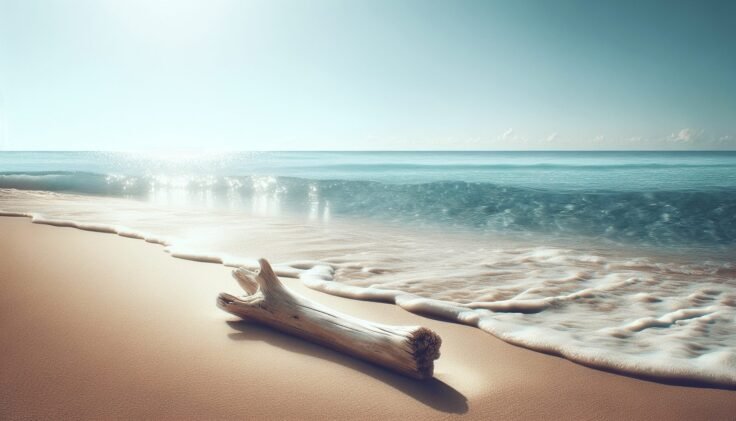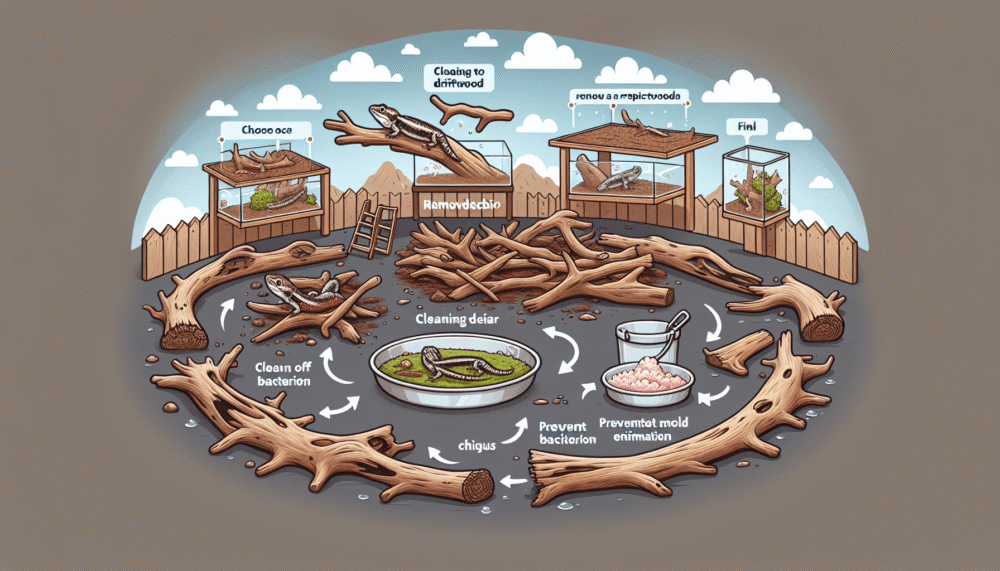Have you ever found yourself walking along the beach, enjoying the peaceful rhythm of the waves, when suddenly a piece of driftwood catches your eye? Driftwood, with its unique shapes and textures, can transform any ordinary setting into a piece of art. But have you ever thought about how to make that driftwood clean and suitable for use in your home or garden?
Understanding Driftwood and Its Appeal
Driftwood is more than just aged, washed-up wood on the shore. It’s a testament to nature’s power and artistry. Transported by wind, waves, and tides, this wood takes on intriguing formations, polished surfaces, and weathered textures after a journey across the seas. Each piece tells its own story, adding a touch of coastal magic wherever it is displayed.
Why You Should Consider Using Driftwood
Driftwood is not just visually appealing; it’s also incredibly versatile. You can use it as a statement piece, a functional item like a coat rack or table centerpiece, or a base for other decorative elements. Moreover, using driftwood in your decor introduces a natural element that resonates with sustainability and eco-friendliness, as you’re repurposing what nature has already supplied.
What You Need to Know Before Starting
Before integrating driftwood into your living space or garden, it’s crucial to understand the process of cleaning it. While driftwood is captivating, it can also carry salt, organic material, and microorganisms that are best removed. Cleaning ensures it’s safe for indoor use and helps preserve its beauty.
Preparing for the Cleaning Process
Getting started with cleaning driftwood requires a bit of preparation. This part of the process doesn’t just involve gathering tools but also knowing the specific attributes of the driftwood piece you’ve found.
Tools and Materials You’ll Need
To properly clean driftwood, you’ll need a few materials:
- A stiff brush or scrub brush
- A large bucket or tub
- Boiling water or clean water for soaking
- Bleach (optional, for disinfecting)
- Sandpaper (for smoothing, if desired)
- Gloves (to protect your hands)
Having these items ready will make your cleaning process smoother and more efficient.
Selecting the Right Driftwood
Not all driftwood is created equal. Consider the size of your find, its overall condition, and how you intend to use it. For smaller projects like jewelry or craft items, thinner branches or unique shapes might be ideal. Larger pieces work well for structural decoration or furniture. Always choose driftwood that seems structurally sound, without excessive rot or damage.

Steps to Clean Driftwood
With your materials ready and your driftwood selected, you’re set to begin the actual cleaning process. This involves several steps to ensure your driftwood is both clean and durable.
Step 1: Brush Off Debris
Begin by using your stiff brush to clean off loose dirt, algae, and other debris from the surface of the driftwood. This initial cleaning removes the superficial layer of grime and dirt that often accumulates from its time in water.
Step 2: Soak in Water
Next, soak the driftwood in clean water. If you have a large piece of driftwood, you may need to use a bathtub or a large container. This step helps leach out the salt, which can otherwise lead to degradation of the wood over time, especially if used indoors. Change the water several times over a few days.
Step 3: Optional Bleach Disinfecting
If your driftwood seems particularly dirty or if you’re concerned about bacteria and pests, consider a bleach soak. Mix a solution of one-part bleach to nine parts water and soak the driftwood for a few hours. This step is crucial if you plan to use the driftwood around food, such as on a dining table or in a kitchen setting.
Step 4: Rinse and Dry
After soaking, thoroughly rinse the driftwood with clean water to remove any residual bleach. Then, allow it to dry completely. This can take several days to a week depending on the size and type of the wood. Ensure it’s dried in a well-ventilated area, preferably outdoors.
Step 5: Optional Sanding
If you want a smoother finish, consider sanding down any rough spots. This step can also enhance the natural textures of the driftwood, highlighting its grain and unique patterns.
Incorporating Driftwood into Your Space
After cleaning, the real fun begins—incorporating the driftwood into your decor. Here, creativity takes center stage.
Driftwood as Decorative Art
Driftwood makes a stunning decorative piece on its own. Place it atop a fireplace mantel, use it as a table centerpiece, or simply lean it against a wall for a natural, rustic look. Mix it with candles, small stones, or shells for a seaside ambiance.
Functional Uses of Driftwood
Beyond aesthetics, driftwood can be functional. Consider transforming larger pieces into a coat rack, a unique curtain rod, or a structural component of custom furniture. Small pieces can serve as bookends or smartphone docks.
Driftwood in the Garden
In gardens, driftwood can be used to build borders, support climbing plants, or even as a feature for water gardens and dry riverbeds. Its weathered look blends seamlessly with the outdoor environment, adding an organic touch.

Maintaining Your Driftwood Pieces
Once your driftwood is clean and incorporated into your space, maintaining its condition ensures it remains beautiful and intact for years to come.
Regular Dusting
Driftwood tends to accumulate dust, especially when indoors. Simply dust it regularly with a dry cloth or use a handheld vacuum for intricate pieces to keep it looking fresh.
Avoiding Moisture
Indoors, ensure that your driftwood stays dry to prevent mold or mildew. Avoid placing it in particularly damp areas unless you’re confident the wood has been sufficiently treated.
Periodic Inspections
Over time, environmental factors may affect your driftwood. Regularly inspect it for signs of wear, pests, or cracking and address these issues early. Applying a wood sealant can help preserve driftwood exposed to the elements.
Benefits of Using Clean Driftwood
Clean driftwood brings numerous benefits into your space. It not only enriches your decor with its natural beauty but also promotes sustainability and creativity.
Environmental Impact
Repurposing driftwood is an environmentally friendly choice. It involves recycling natural materials and reducing waste, thus contributing to ecological well-being while beautifying your surroundings.
Personal Satisfaction
Creating art and functional pieces from driftwood can be deeply rewarding. It challenges you to see potential and beauty in natural materials, and the creative process can be both therapeutic and fulfilling.
Longevity and Durability
Properly cleaned and maintained, driftwood pieces can last a long time, becoming heirloom pieces that might be appreciated by generations.
Overcoming Common Challenges
As with any DIY project, using driftwood comes with its own set of challenges.
Dealing with Complex Shapes
Driftwood often has unusual shapes that can be hard to work with. Embrace these complexities by seeing them as an opportunity for creativity. The unique forms can inspire new ways to incorporate them into your decor.
Preventing Splintering
If driftwood pieces are frequently handled, they might start to splinter. Prevent this by sanding rough areas or using a clear wood conditioner or sealant.
Ensuring Bug-free Driftwood
Even after cleaning, driftwood can harbor pests. If you suspect a bug problem, gently heat the wood in your oven at a low temperature to remove any remnants, ensuring you do this carefully to avoid damaging the wood or causing a fire hazard.
Driftwood Projects to Try
You now have the skills and knowledge to clean driftwood, but the possibilities for using it are endless. Here are some project ideas:
- Driftwood Wall Art: Attach flat pieces to create a textured mural.
- Table Stand or Base: Use a sturdy piece of driftwood as a unique base for a glass tabletop.
- Plant Holders: Fashion holders or racks from driftwood for succulents or air plants.
- Lamps: Use a larger piece of driftwood as a base for a lamp.
Conclusion
Driftwood’s allure is timeless, its forms natural and intriguing. Cleaning and repurposing driftwood for your home or garden isn’t just a task but a celebration of nature’s resilience and beauty. Each piece of driftwood you clean and incorporate into your space invites nature indoors, allowing the history and essence of the sea to become part of your everyday living. So next time you spot a piece on the shore, you’ll know exactly how to turn it into something both beautiful and enduring.
















